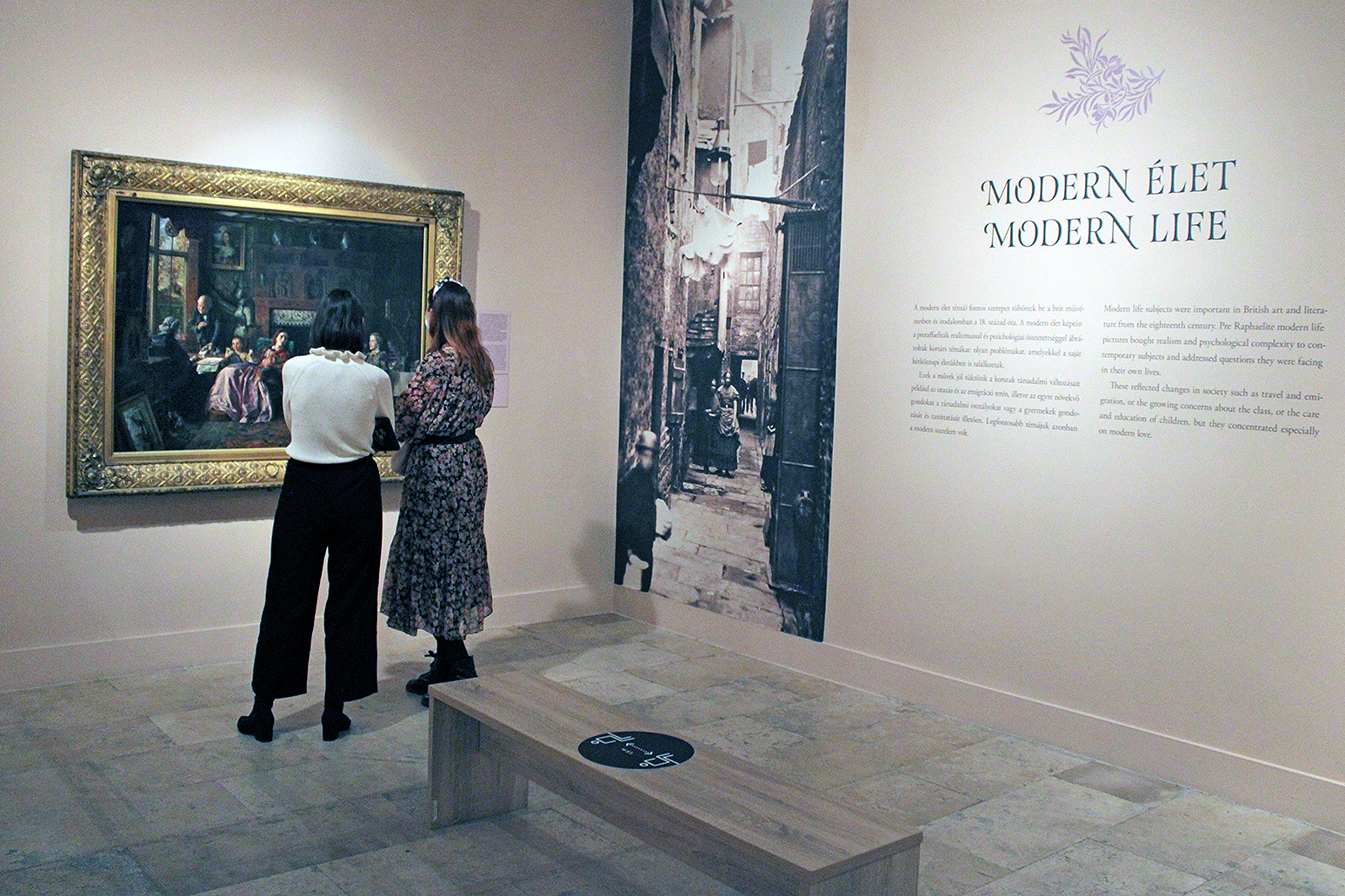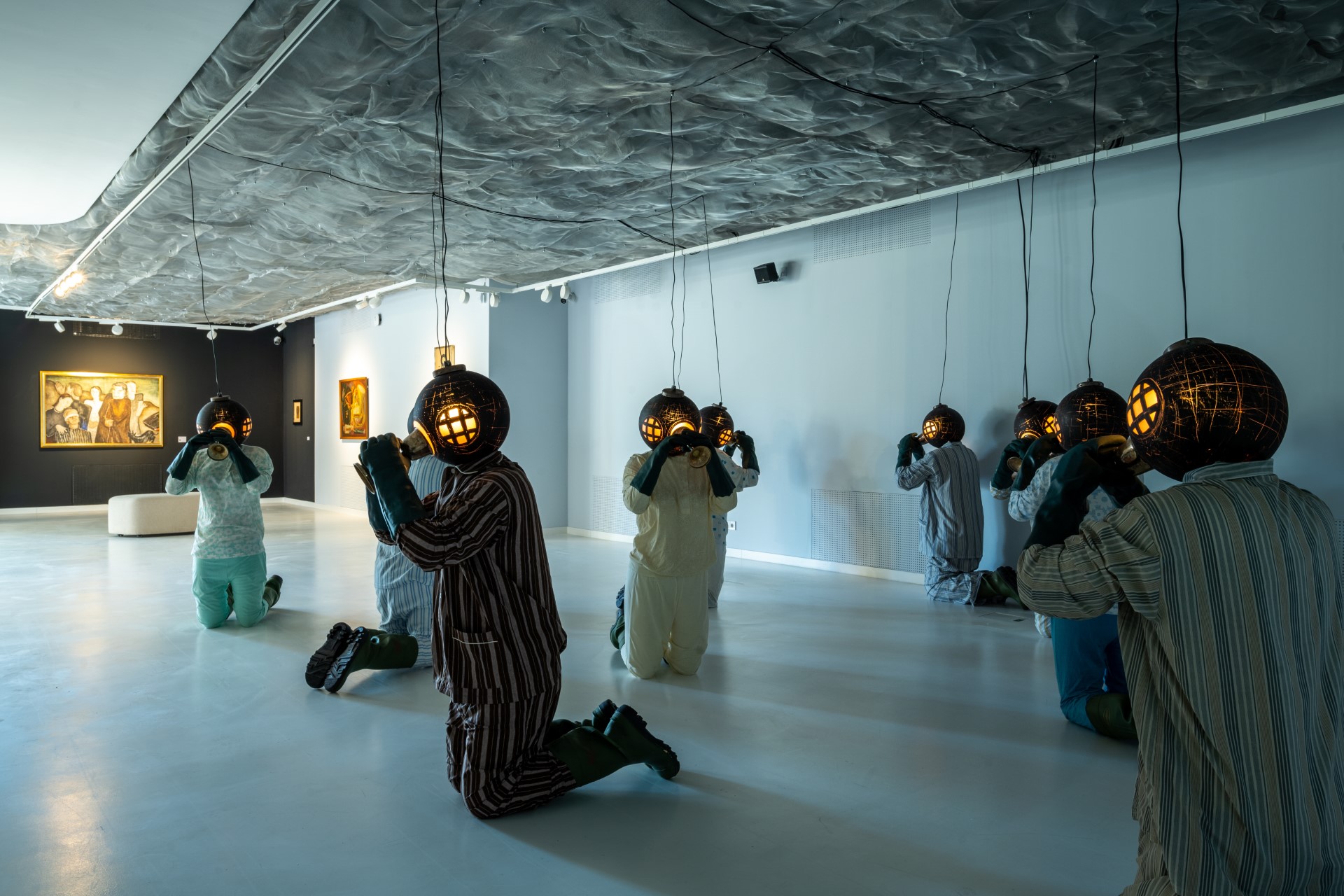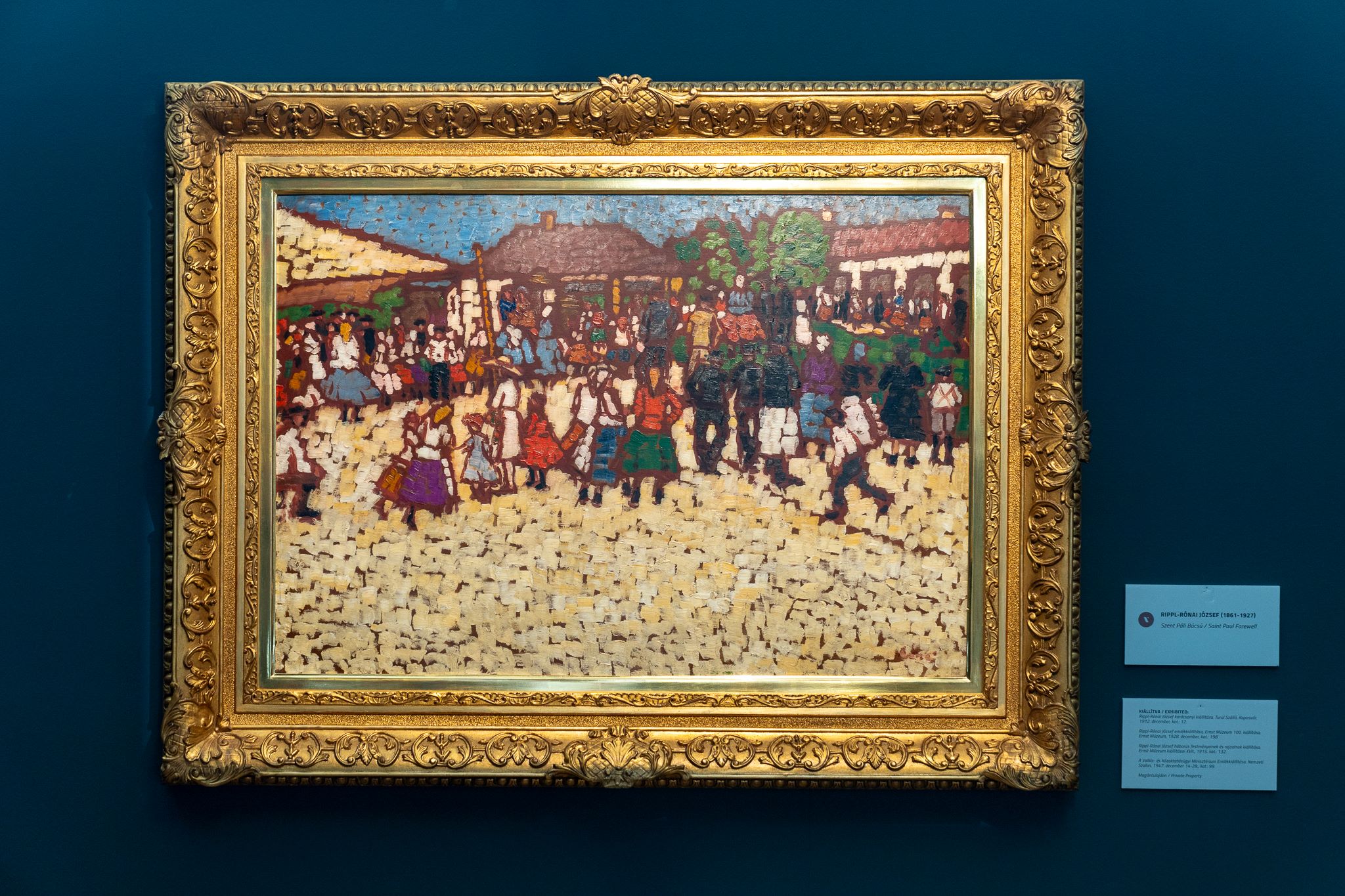Warming up With the Pre-Raphaelites at the Hungarian National Gallery

Photo by Gabriella Kiss
On a recent unseasonably cold and rainy Sunday, my Hungarian partner and I took refuge in the Pre-Raphaelite exhibition at the Hungarian National Gallery. It was our first visit to an art gallery in more than a year.
Despite the weather, plenty of other Budapest art-lovers had the same idea as us. We had to queue to get in.
The exhibition consists of around 40 paintings and more than 50 graphic pieces from the Tate Britain collection, along with Dante Gabriel Rossetti’s “The Day Dream,” loaned by the Victoria and Albert Museum. It is the most comprehensive exhibition of Pre-Raphaelite art in Hungary ever.
For my partner, who loves the Pre-Raphaelites and London’s museums, the exhibition was a treat.
The artistic school got their name because they opposed the British Royal Academy’s promotion of Renaissance painter Raphael, then associated with profound conservatism. They were also in opposition to the triviality of the popular painting genre at the time.
Instead, they were inspired by nature and serious subjects such as love and death treated realistically. Perhaps surprisingly, considering the perception of them as painters of sumptuous, idealized nature, they also painted contemporary social problems.
The Pre-Raphaelite Brotherhood, as it was originally known, was rooted in the various romantic movements that grew up in the early part of the 19th century, partly in reaction to the ferocious pace of change triggered by the Industrial Revolution. Their concern with painting nature also reflected how the environment and social fabric of the British countryside was being destroyed by factories and mass migration to work in city factories.
From around 1860 onwards, driven by the fervor of leaders Dante Gabriel Rossetti, William Holman Hunt, and John Everett Millais, the Pre-Raphaelites became increasingly influential.
The Ethos
Rossetti formulated four principles that summed up the ethos of the movement: to have genuine ideas to express; to study nature attentively so as to know how to express it; to sympathize with what is direct and serious in previous art; and, above all, to produce thoroughly good pictures and statues.
As well as being painters and sculptors, several members of the movement were writers and poets. The exhibition at the National Gallery includes examples of their poetry, such as Rossetti’s “The Day Dream (For a Picture).”
The poem is related to the artist’s painting “The Day Dream,” one of the most famous Pre-Raphaelite paintings. Painted in 1880, when the artists connected to the movement were doing more portraits, this depicts Rossetti’s muse Jane Morris who embodied the Pre-Raphaelite ideal of beauty.
Morris, a highly skilled embroiderer and the wife of William Morris, was a somewhat unconventional and powerful woman.
“The Day Dream” is one of my partner’s favorites, and it’s easy to see why. Mysterious and intriguing, it’s painted with a sensuality that suggests Rossetti’s deep feelings for his muse. Morris is clutching a small honeysuckle which, for the Victorians, was a symbol of love.
The painting shows Morris in full. Reading around, I discovered that it was unusual for Rossetti to depict his subjects full-length. I was delighted to find that Rossetti felt obliged to confess to Morris that he had copied another woman’s legs. While this undercuts the romance of the painting for me somewhat, it didn’t stop my partner from buying a fridge magnet of it.
Although the name Pre-Raphaelite was used to describe a certain kind of British art for a few decades afterward, the core of the movement broke up in 1850 when Millais exhibited “Christ in the House of his Parents,” which caused outrage by showing the sacred family as ordinary. In 1853, Millais became a member of the Royal Academy, sworn enemy of the Pre-Raphaelites, and the group officially dissolved.
In the late 1850s, Rossetti met William Morris and Edward Burne-Jones. Together they began to promote an even more rigorous form of Pre-Raphaelitism that venerated life before the industrial revolution.
Arts & Crafts
William Morris, whose work is well represented in the exhibition at the National Gallery, went on to create and lead the Arts & Crafts Movement, which was revolutionary in its time. This took the principles of the Pre-Raphaelites beyond fine art and into everyday life, producing furniture, wallpaper, textiles, and stained glass. The company he formed lasted until 1940.
By that time, the Pre-Raphaelites themselves had become rather unfashionable. Their radicalism had been well and truly surpassed by the various flavors of modern, avant-garde art. One of their few champions was the ever-contrary Surrealist Salvador Dali, who admired the paintings of women such as the subject of “The Day Dream” as “the gelatinous meat of the most guilty of sentimental dreams.”
During the 1960s, when there was a revival of interest in celebrating nature and rejecting the supposed gains of modern, industrial society, the Pre-Raphaelites and the Arts and Crafts movement began to be taken seriously again. Since then, interest in these groups has risen steadily, particularly internationally.
Apart from the simple pleasure of walking around a splendid art gallery again, it seemed especially fitting on a cold, rainy day that we were able to bask in the glow from such richly colored, idealistic works of art. The elegantly produced information boards that accompanied the work were particularly detailed and included a useful chronology that compared what was happening in Britain and Hungary at the time, in English and Hungarian.
Happily for my partner, who loves a good souvenir or two, the selection of gifts to commemorate the exhibition was of a high standard, with various items coming from the Victoria & Albert.
“Desired Beauty. Pre-Raphaelite Masterpieces from the Tate Collection” runs until August 22. The museum suggests you allow 1.5-3 hours to wander around. Tickets cost HUF 3,600, concessions HUF 1,800. The Hungarian National Gallery is at Szent György tér 2, in the Buda Castle District, and is housed in part of the Royal Palace. This exhibition is in Building “C.”
This article was first published in the Budapest Business Journal print issue of June 4, 2021.
SUPPORT THE BUDAPEST BUSINESS JOURNAL
Producing journalism that is worthy of the name is a costly business. For 27 years, the publishers, editors and reporters of the Budapest Business Journal have striven to bring you business news that works, information that you can trust, that is factual, accurate and presented without fear or favor.
Newspaper organizations across the globe have struggled to find a business model that allows them to continue to excel, without compromising their ability to perform. Most recently, some have experimented with the idea of involving their most important stakeholders, their readers.
We would like to offer that same opportunity to our readers. We would like to invite you to help us deliver the quality business journalism you require. Hit our Support the BBJ button and you can choose the how much and how often you send us your contributions.









